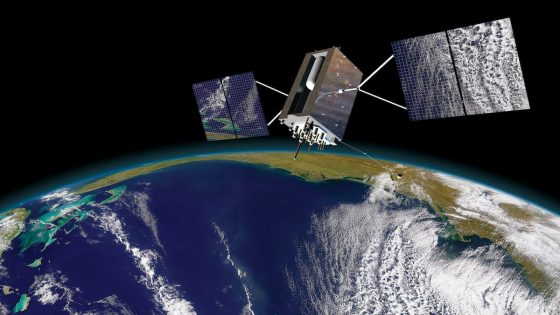The Space Force announced this week the four companies that will compete to build its first batch of Resilient GPS satellites, aimed at ensuring military and civilian users have access to reliable positioning, navigation and timing signals.
The serviceâs acquisition arm, Space Systems Command, chose L3Harris, Astranis, Axient and Sierra Space to create design concepts for the program. From that pool, it will select a subset to finalize their designs and build prototypes and then will pick one or more firms to build the first eight satellites. Command officials wants those spacecraft to be ready to launch by 2028.
The Pentagon has become increasingly concerned about GPS signals â used to guide weapons and help units navigate â being jammed or spoofed by adversaries. Russia has taken advantage of this vulnerability in Ukraine, using electronic warfare to jam signals on a regular basis.
The Resilient GPS program, or R-GPS, is meant to augment the Space Forceâs current constellation of GPS satellites with a fleet of smaller spacecraft that will transmit a set of signals widely used by the military and civilian agencies.
The service used an accounting tactic provided by Congress to shift funding from elsewhere in its budget to award initial contracts. Known as a quick-start, the transfer authority came in the Fiscal 2024 National Defense Authorization Act, allowing the Defense Department to reprogram up to $100 million in funding to start high-priority programs before they are approved as part of a formal budget cycle.
âThanks to the Quick-Start authority that was approved by Congress, we were able to field and award contracts for these low-cost satellites in less than six months,â Air Force Secretary Frank Kendall said in a statement. âThis authority allows us to move faster and start new Space Force and Air Force programs.â
The early funding has allowed Space Systems Command to conduct market research, host an industry day, release a solicitation and award the first round of contracts in less than six months.
The Space Force did not disclose the value of those awards. However, it has told Congress it expects the program to cost $1 billion over the next five years. To date, it has shifted $40 million in FY23 funding to support he effort and has asked lawmakers to realign another $77 million in FY25 toward R-GPS.
The House Appropriations defense subcommittee has cast doubt on whether the effort will be as resilient as the Space Force hopes. In its version of FY25 defense spending legislation, the panel proposed denying the serviceâs request to realign FY25 money and questioned whether quick-start authorities should be used for the effort.
âWhile proliferation may provide some advantages, it is not clear how these additional satellites increase the resilience against the primary jamming threat to GPS, compared to alternative concepts for position, navigation, and timing systems being pursued elsewhere in the Department of Defense,â lawmakers said in a report accompanying the bill, released in June.
They also took issue with the programâs focus on resilient satellites versus improving the GPS ground systems and user equipment. The Space Force has said the goal is for the satellites to use existing devices.
Once the first R-GPS satellites are fielded, Space Systems Command officials envision updating the constellation with new technology on a regular cadence, similar to the Space Development Agencyâs approach to fielding missile warning and data transport satellites as part of its Proliferated Warfighter Space Architecture.
The service said each new batch of R-GPS capability will include up to eight satellites, but didnât disclose how regularly it plans to field those spacecraft.
Courtney Albon is C4ISRNETâs space and emerging technology reporter. She has covered the U.S. military since 2012, with a focus on the Air Force and Space Force. She has reported on some of the Defense Departmentâs most significant acquisition, budget and policy challenges.
Source Agencies



